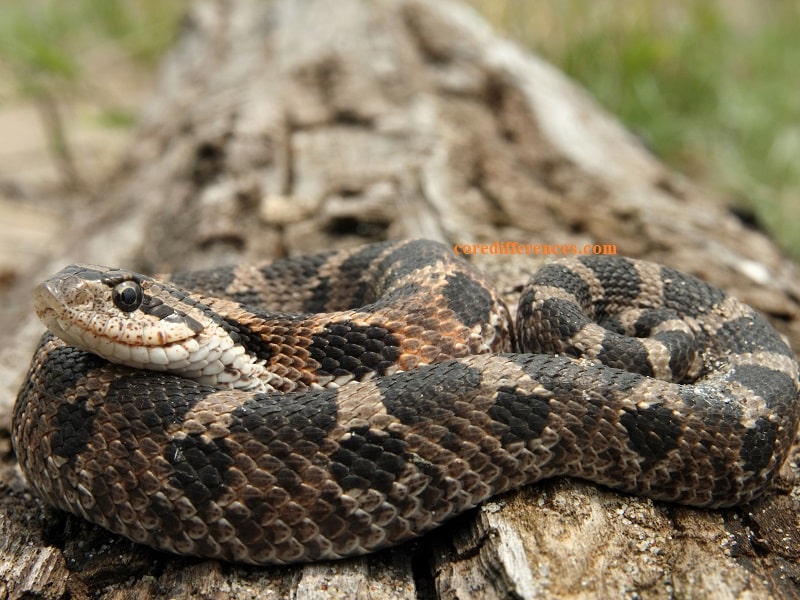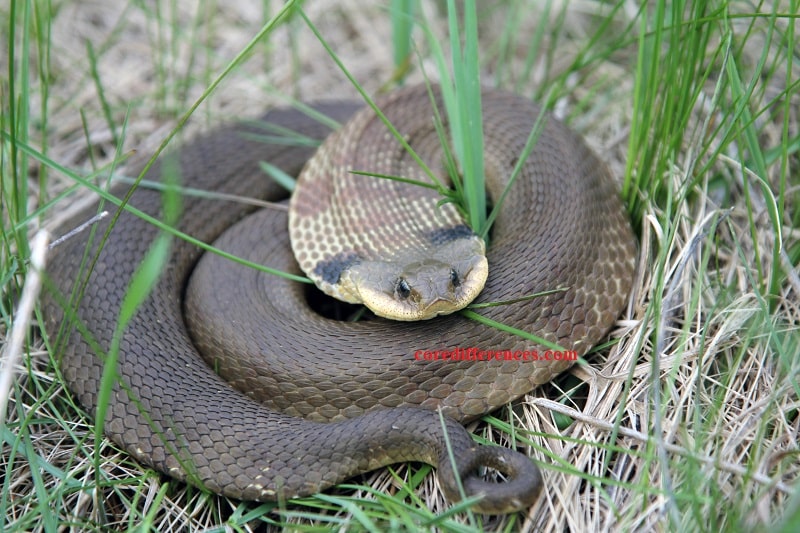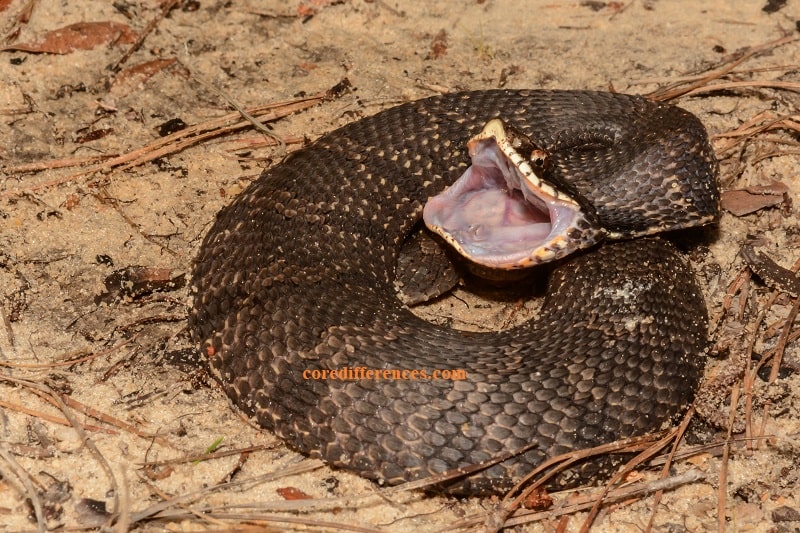Hognose snakes are among the most popular timid snakes in Canada, Mexico, and the United States of America. The apprehensive behavior makes the snake spend most of the time hiding in their habitat.
Hognose care is straightforward since these snakes have special diets, habitats, and sanitation requirements. But challenges for hognose snakes care are inevitable.
How to care for a hognose snake: Provide a meat diet, hideouts, average humidity, ambient temperature, substrate, and lighting. Ensure heating and temperature do not go beyond 78 degrees.
This article provides an in-depth hognose snake care sheet for you. If you are interested in learning more about how to care for hognose snakes, keep on reading.

What Is a Hognose Snake?
The hognose snake is a non-venomous snake that belongs to the family Colubridae. The upturned snout is the reason behind the name hognose.
Both baby and adult hognose snakes are harmless. But it is recommended to stay safe by avoiding puff adders or blow snakes of North America.
Research shows that hognose snakes can strike the predator if they feel threatened. Keep in mind that these snake species rarely bite.
Many Americans go for the hognose snake as a pet. The norm has seen a rapid increase in hognose snake price in many exotic pet stores in the country.
The hognose care sheet below will help raise your reptile according to their natural standards. Keep reading and get to know where you can get hognose for sale.
What Does a Hognose Snake Look Like?
A hognose snake is a timid and non-venomous snake species that belongs to the family Colubridae. The upturned snout is a distinguishing feature from other snake species in the world.
These stunning snake species use the upturned snout to dig in the soil and leaf litter. The vibrant colors and shiny skin make the snake have an outstanding appearance.
Hognose snakes come in different colors such as yellow, gray, olive, orange, and even black. These vibrant colors happen to be the reasons for the high number of hognose snake breeders and owners.
These snakes are mainly found in Mexico, Canada, and the United States of America. The natural habitats are woodland with sandy soil, farmland, coastal areas, and fields.
Hognose snakes usually flatten their necks and raise their heads off the ground like cobras if they feel threatened. It is a trait that prohibits predators from coming close to them.
It would be best to note that hognose snake roll on their back and play dead. The reptile ends up emitting foul musk and fecal matter in liquid form. The tongue also lays out along with blood droplets.
If you’re searching for a pet snake, look no more as a hognose snake is an option for you. You can pet a hognose snake without the fear of snakebite.

Hognose Snake Facts (General Overview)
Hognose snake is a name referring to several colubrid snake species with upturned snouts. These species belong to the same genera and have close similarities. Below is a hognose snakes’ profile:
| Class | Reptilia |
| Order | Squamata |
| Family | Colubridae |
| Genus | Heterodon (Northern Mexico & U.S) Leioheterodon (Madagascar) Lystrophis (Southern America)
|
| Species | Nasicus
Madagascariensis Histricus |
| Lifespan | 10-20 years |
| Egg Gestation | Females will lay 4-20 eggs and hatch after about 50-65 days |
| Number of young at birth | 4-20 |
| Age of maturity | 2 years |
| Hognose Size for adult | 1-3 feet |
| Weight | 0.5 lbs |
| Size at birth | 5-9 inches |
| Toxicity | Mild venomous |
| In Captivity | Easy pet and care for |
| Diet | Rodents and lizards |
| Behavior | Timid and play dead |
You May Also Enjoy: Difference between King Cobra and Black Mamba
Types of Hognose Snakes
Hognose snakes are an excellent choice for pet snake beginners. These creatures come in a variety of colors and patterns. The variations of hognose snakes are known as morphs. Let’s find that out in this article.
Western Hognose Snake
It is also known as blow snake, faux viper, spreadhead snake, spoonbill snake, and Texas hognose snake. The species is non-venomous and endemic to North America. It is less expensive in the market when compared to other species.
Albino Hognose Morph
The hognose snakes have a yellowish tan with orange splotches on their skin. The red eyes usually give them the courage to look directly into the soul of their owners. But the species is harmless and love to feel the warmth of the hands.
Pink Hognose Snake
The snake species belong to albino hognose snakes. Variation in colors is the reason behind the separation as a pink, red, and albino anaconda. But both variations are ideal for keeping a pet snake at home.
Snow Hognose Morph
This stunning hognose morph has a snow-white color skin without any patterns. The large and protruding scales are quite visible. But these species are rare and the reason behind their high prices.
Eastern Hognose Snake
The hognose snake is also known as puff adder. The thick-bodied snake has a length of about 46 inches long. The hognose morphs come in different colors such as yellow, gray, green, brown, and even black. The snake is harmless to human beings.
How to Care for a Hognose Snake
Hognose Snake Temperature
Hognose snakes thrive in an environment of 88 to 90 degrees Fahrenheit. Ensure the temperature does not go below or above the range.
The low temperature will make the reptile experience brumation. The snake will start blistering when exposed to high temperatures. These conditions will make the pet snake not eat.
Hognose Snake Humidity
These snake species prefer the above-average level of humidity and hot conditions. The natural habitat of hognose snakes has a humidity range of about 30-50%.
The humidity of about 60-65% is only important during shedding. We recommend misting your snake daily to maintain this level of humidity. Use lukewarm water when misting to avoid traumatizing the snake.
What Do Hognose Snakes Eat?
Having a hognose snake feeding schedule is important. It is the best option to prevent getting a harmless snakebite from your reptile friend.
Feed your snake late in the morning when they are active. Adult hognose snakes feed on rodents and lizards. Baby hognose feeds on pink mice and insects. You can these foods from any pet store.
Hognose Snake Hideouts
Provide a large hideout for the snake. It makes things easier when it comes to cleaning and sanitization. Besides that, a large hideout helps to accommodate the huge body coil of hognose snakes.
We recommend dishwasher safe hides and bowl. You can also use cork wood hides but it will be challenging to clean. But it is an attractive and snake friendly hide.

Hognose Snake Lighting
These creatures are diurnal. It would be best to provide full spectrum for about 14-16 hours per day in spring and 8-10 hours in autumn and winter.
Light is the main source of vitamin D for hognose snakes. No need for providing a VDB lighting source. Do not rely on foods with Vitamin D alone to handle your reptile.
Hognose Snake Substrate
Provide a safe substrate for your snake to avoid the burrowing issue. We recommend the use of insulating layers like reptile carpet under the glass and top of the heating mat.
Hognose snakes love a warm environment. The reptiles have no sense of a feeling increase in temperature. The keeper has the responsibility of moving the snake to cooler spots.
Hognose Snake Tank Set-up
Get a tank with a large room to allow freedom of movement. Ensure the tank is not huge since too much space will make the snake scared and insecure.
A 10-gallon tank is suitable for a juvenile hognose snake and an adult hognose might need about 20–30-gallon tank size. Place the tank horizontally since hognose snakes are poor climbers.
Frequently Asked Questions about Hognose Care
Do Hognose Snakes Bite?
Not really. Hognose snakes rarely bite human beings. But there are instances where the snake might bite. It is a situation where the reptile feels threatened.
Are Western Hognose Snakes Venomous?
No. Western hognose belong to colubrids and they are non-venomous. Western hognose snakes are thought to be phlegmatic and mild captives.
How Much Do Hognose Snakes Cost?
Hognose snakes come in several morphs. Each variation has its price tag. But most hognose snakes are quite affordable. Search western hognose snake for sale near me to get the best western hog discount.
Where Do Hognose Snakes Live?
The native habitat of hognose snakes is the Coastal Plain of the southeastern United States like that of North Carolina, South Carolina, Georgia, Florida, Alabama, and Mississippi.
Are Hognose Snakes Good Pets?
Yes! Hognose snakes are some of the best pets for reptile enthusiasts. This reptile is more exotic than gecko but less fussy than a ball python. You can easily compromise their behavior.
How Big Does A Hognose Snake Get?
It is about 14-46 inches. But this depends on gender and species. Some species can grow anywhere between 14 inches and 46 inches long. Female hognose snakes are known for growing bigger than their male counterparts.

In Conclusion
Hognose snake care routine is simple and easy. The snake species can be compromised and tamed to cope with the human style.
Providing the correct diet, temperature, humidity, hides, tank, and substrate is the best way to raise your hognose snake pet like a pro.
The most exciting thing is that hognose is harmless and non-venomous. Besides that, they rarely bite human beings. But making the snake species feel threaten might attack you.